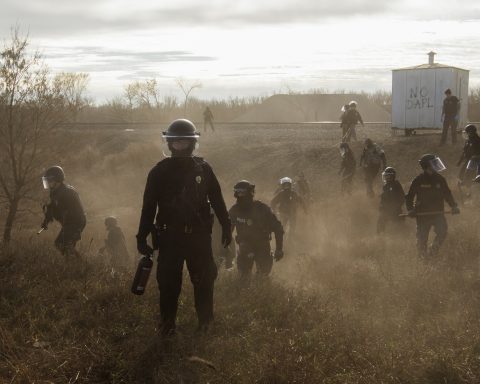Gareth Gransaull is the co-executive director of Re_Generation, Canada’s next-generation think tank working to build a regenerative economy, and a climate policy researcher with the Institute for Integrated Energy Systems at the University of Victoria.
As an energy-exporting nation, Canada has long neglected a crucial element of meaningful climate action: reducing fossil fuel production. While the federal government has implemented some measures designed to lower fossil fuel demand, including a price on carbon, policies to transform our energy sector for a low-carbon future are lacking. At the UN climate summit in Egypt last month, Canada received backlash for its failure to commit to a managed phase-out of fossil fuels. Although we’ve promised to introduce a cap on energy sector emissions, this cap will not address Scope 3 emissions (those up and down a company’s supply chain), which account for around 88% of total emissions from the oil and gas industry.
Canada’s refusal to implement policies that tackle the supply of fossil fuels is at odds with emerging global realities. The clean energy transition is happening faster than predicted, with renewable deployment rates growing in line with the International Energy Agency’s scenario for reaching net-zero by 2050. This is due to the exponential rate at which renewable technology is being adopted, coupled with accelerating climate policy ambition. Researchers at Oxford University’s Institute for New Economic Thinking found that a rapid transition to 100% clean energy is the cheapest of all possible energy futures, yielding US$12 trillion in savings by 2070.
Our country has not woken up to this pace of change, as outlined in the new report from Re_Generation, Canada’s largest youth organization advancing sustainable business. Canadian energy firms and financial institutions are doubling down on fossil fuel expansion at a time when the world is moving in the opposite direction. While European firms like TotalEnergies, BP and Eni plan to curtail production by 2030 and dramatically increase their capital expenditures on renewables, Canadian energy firms plan to expand production by 30% by 2030, growing at a rate that would overshoot Canada’s 2050 target for the oil and gas sector’s emissions by 94%. And while European firms predict future oil prices will be between $25 and $45 per barrel by 2050, Canadian firms project prices of around $80 a barrel into the indefinite future. At the same time, the five largest Canadian banks have provided $700 billion to the fossil fuel sector since 2015 and doubled their year-over-year financing in 2021.
The inability to prepare adequately for the energy transition will come with significant economic costs. A study published in the journal Nature found that Canada alone will face $100 billion in stranded assets by 2036, representing 35% of the book value of oil and gas properties for all oil and gas issuers listed on the Toronto Stock Exchange. Crucially, this study introduces a new and more accurate form of climate modelling that can account for trends that have been historically underestimated. This could have enormous implications for the energy transition – particularly in Canada, where the country’s oil will likely be the first to become stranded as it is comparatively expensive and emissions-intensive.
While Canadian energy majors have paid lip service to the idea of becoming “net-zero,” their current climate strategies amount to delay tactics. Promoting carbon capture, utilization and storage (CCUS) technologies as the road to a low-carbon future is a way to prolong fossil fuel dependence while doing nothing to address Scope 3 emissions. Data from the Intergovernmental Panel on Climate Change shows that CCUS is the most expensive decarbonization measure with the lowest potential for emission reductions at a global level. Carbon capture also has a long history of failure; a review of 200 studies on CCUS projects found them to result in net CO2 additions, not reductions. At a time when renewable energy costs are declining precipitously, building expensive CCUS facilities will only cause Canadian energy to become even less competitive globally.
There are a number of policy options available to address these gaps. For a start, Canada must stop support for fossil fuel financing and implement measures to align our financial system with limiting global warming to a threshold of 1.5°C. The Climate-Aligned Finance Act is a landmark piece of legislation, introduced by Senator Rosa Galvez, that would create the regulatory certainty necessary to guide investment toward a climate-safe future. The government can also use other forms of economic planning to accelerate a rapid transition, combining green central banking tools with a coordinated green industrial strategy. All of these measures must be combined with a robust framework for a just transition, embedded in a federal Just Transition Act, to ensure that all Canadian communities reap the benefits of the energy transition.





